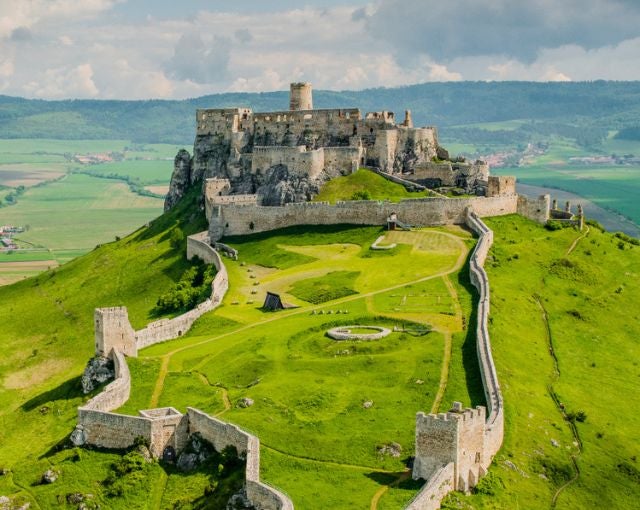
3/12/2025
Historical Jewels of Slovakia
Slovakia is widely known for its natural beauties, but the country is also very rich in historical monuments. We would like to introduce several architectural marvels which could lure you to travel to Slovakia, maybe this spring. Slovakia can boast of an enormous number of castles and palaces. Because of the constant threat of an Ottoman invasion in the past centuries, the castles and forts in the country were well managed until the early 18th century, so that many have survived in remarkably good condition.
Folk Culture
An inseparable part of the image of Slovakia are the picturesque villages and shepherds’ huts on the slopes of the mountains. Slovaks are deservedly very proud of their folk culture, keeping multiple open-air village museums. One of the most important ones, in Vlkolínec near Ružomberok, is included on the UNESCO World Heritage List. You can inspect the wooden chalets and animal sheds in the charming mountain village, or you can watch a living museum event to learn about the life of poor countryfolk in the past centuries. Poor as the villagers were, their life was in some ways richer than ours…
Castles Wherever You Look
The valley of the River Váh is particularly rich in medieval architecture. The first castle is located directly in the town of Žilina. Budatín Castle, not far from the train station, looks rather like a fancy palace today. The testimonies of its medieval origins include the cylindrical defence tower. The castle hosts expositions of the Váh Museum about the history of the region and wirecraft.
The ruins of Lietava, not far from Žilina, are a completely different thing. Its white limestone walls shine against the green of the woods. It used to be a magnificent fort, manned by nearly 300 mercenaries in the 16th century. The modern hexagonal tower in the northwest corner of the court was built as late as the 17th century.
🏰 The Biggest of the Big
The most famous among them is Spiš Castle. Its monumental ruins overlook the country named after it – Spiš, formerly also Szepes or Scepusium. When you look at the magnificent walls, it is hardly surprising that it was one of the largest castles in Europe. Its origins date back to the 12th century. Its fortifications played an important role in the defence against the 1241 Mongol invasion. That persuaded the rulers to keep expanding the castle. The late medieval zone of the castle is linked to Czech history. The fortified part at the foot of the castle hill was erected after 1440 when royal mercenaries, many of them former Hussite warriors, were garrisoned at the castle. Their commander, the Czech John Jiskra of Brandýs conducted the construction projects which more than doubled the area of the castle. The castle continued to be used as a military base and fortress until the early 18th century. A vast fire completed the devastation in 1780. The ruins of the largest Slovak castle were included on the UNESCO World Heritage List in 1993.
The Biggest Slovak Temple
In addition to impressive castles, Slovakia can also boast of a number of stunning churches. The biggest and one of the most admired one is the Church of St. Elizabeth in Košice. The magnificent gothic structure was completed in 1508. The seat of the Košice Archiepiscopate, it is said to be the easternmost gothic cathedral in Europe, but its architecture does not meet the criteria for a cathedral. Also, similar churches can be found further east – in Transylvania, Romania – although they were all inspired by the Košice Dome.
TEXT: Karol Nagy
PHOTO: Shutterstock.com
The whole article is to be found in the spring issue of the Leo Express magazine
Share article
0 x
Copy URL
Log into the loyalty program Smile Club
Don't have an account yet?
By logging in I agree with conditions of the loyalty program, processing of personal data and declare that I have reached the age of 16. Cancellation of tickets is only possible to leo credits.


